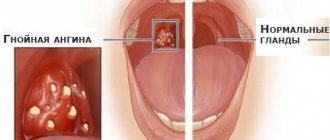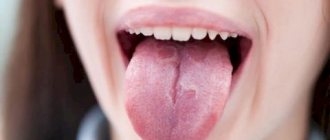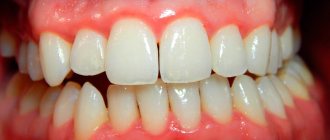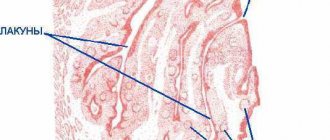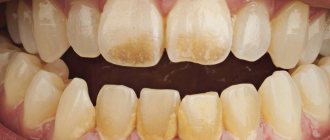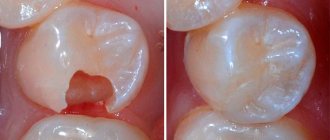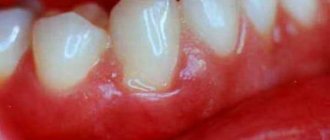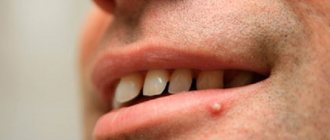This is a fairly common disease that can occur in both children and adults, but the former are more often affected by it. In any case, it is important to know how to quickly cure a sore throat in order to quickly alleviate the patient’s condition and to prevent the development of complications. Despite the prevalence of the disease and, it would seem, a lot of known methods of treating it, you should not neglect medical help. To understand the insidiousness of the disease, you should learn more about it - what it is, what types there are and what methods of elimination are used.
This is what you will learn about sore throat and its treatment by reading this article
- What is a sore throat?
- Types of sore throat, symptoms, treatment
- Catarrhal sore throat
- Symptoms
- Treatment
- Follicular tonsillitis
- Symptoms
- Treatment
- Lacunar tonsillitis
- Symptoms
- Treatment
- Fibrinous tonsillitis
- Symptoms
- Treatment
- Quinsy
- Symptoms
- Treatment
- Herpangina
- Symptoms
- Treatment
- Ulcerative membranous tonsillitis
- Symptoms
- Treatment
- Traditional medicine in the treatment of sore throat
- Treatment of sore throat with antibiotics
- Complications of sore throat
- When should you call an ambulance?
- Nutrition for sore throat
- Mistakes in the treatment of sore throat
What is a sore throat?
This is a disease of infectious origin, occurring in an acute form. Its causative agent is usually bacteria (most often the disease is caused by beta-hemolytic streptococcus, staphylococcus). But viruses and fungi can provoke the disease. How to quickly cure a sore throat depends on what kind of microorganisms it is caused by, because only those drugs that can act directly on them will be effective.
The infection affects the palatine tonsils, causing them to become inflamed, which is accompanied by the accumulation of pus, swelling, and difficulty breathing. In medicine, the disease is also known as acute tonsillitis. Considering that it is infectious, tonsillitis is contagious and is transmitted by airborne droplets, through household items, and food.
how to treat a sore throat
For reference. The tonsils are lymphatic tissue that is part of the pharyngeal ring. Thanks to them, peripheral immunity is formed, they protect the body from infections.
Back to Contents
Treatment of tonsillitis
Treatment methods for tonsillitis include conservative therapy, local and general. Removal of tonsils for tonsillitis is performed if conventional treatment does not help and this can cause complications in other organs.
How to treat tonsillitis? General methods of conservative treatment include hardening procedures: gymnastics and other outdoor sports, hardening and wiping with water, regular moderate physical activity. They play a big role in supporting the immune system, but they cannot be used for acute or chronic forms of tonsillitis and in the period in between. General therapy includes various physiotherapeutic procedures: irradiation with short-wave ultraviolet light, laser therapy, phonophoresis, diathermy. They can be carried out for general or local symptoms of tonsillitis in the interval between its acute forms.
Local treatment of tonsillitis involves lubricating the tonsils and their lacunae with solutions of iodine tincture, Lugol, iodine glycerin and others. The main effect of the solutions is not an antibacterial effect, but an anti-inflammatory, soothing and astringent property. They help relieve acute pain and normalize food and water intake.
How to treat chronic tonsillitis? The main method of treatment is taking antibiotics. Most often, the patient is prescribed protected aminopenicillins. Treatment of the chronic form of tonsillitis can be complicated by the fact that the resorption capacity of the palatine tonsils decreases and sclerotic processes occur around the lacunae.
Antibiotics for tonsillitis
Treatment of tonsillitis with antibiotics is prescribed by a doctor, who takes into account the sensitivity of the microorganism to a specific drug. It is worth remembering that if the causative agent of tonsillitis is a viral infection, then in such a situation antibiotics will simply be ineffective.
Penicillin antibiotics are most often prescribed to treat this disease. These drugs are completely and quickly absorbed in the intestine. Before their appointment, a smear must be taken in order to determine the type of pathogen.
Antibiotics for chronic tonsillitis are prescribed during an exacerbation of the disease. There are two types of antibiotics:
- First-line drugs are penicillins. Their functions include both the treatment of exacerbations of the disease and the prevention of rheumatism and glomerulonephritis, which are caused by hemolytic stretococci;
- second-line drugs - macrolides.
As for penicillins, semi-synthetic drugs in tablet form are now most often prescribed: amoxcillin, oxacillin, ticarcillin. Although, of course, the most effective are inhibitor-protected penicillins, which are resistant to microbial enzymes due to the addition of clavulanic acid.
If the causative agent of the disease is Staphylococcus aureus, then antibiotics for tonsillitis for adults are prescribed - aminoglycosides. These antibiotics have fewer kidney side effects.
The method of surgical treatment of tonsillitis cannot always eliminate a chronic infection completely, since it spreads not only to the tonsils, but also to the surrounding tissue, lymph nodes and other areas. If chronic tonsillitis continues for a long time, it can lead to the development of a pronounced infectious and allergic process.
Recently, cryotherapy has been used in the treatment of chronic tonsillitis. The tonsils and back wall of the pharynx are exposed to low temperatures. Thanks to this, the altered surface layers of tissue are destroyed and pathogenic microflora is eliminated. After cryotherapy, the pharyngeal mucosa returns to normal and is restored, the tonsils fully retain their functions. The advantage of this method compared to surgery is the absence of pain, bleeding and complete tissue restoration.
You can search for cheap medications in pharmacies after doctor's prescriptions through our website. They are also easy to book online, saving you money and time.
Types of sore throat, symptoms, treatment
Depending on the course of the disease, its symptoms, its varieties are as follows:
- Catarrhal;
- Follicular;
- Lacunarnaya;
- Fibrinous;
- Phlegmonous;
- Herpetic;
- Ulcerative-membranous.
General signs of the disease are:
- Pain in the throat, which is sharp and intensifies during conversation, when swallowing;
- Fever (depending on the type of illness and the severity of its course, it can reach 40 degrees);
- General weakness of the body, severe muscle weakness;
- Headache;
- Redness of the tonsils and mucous membranes of the throat;
- The appearance of white plaque on the tonsils, their enlargement.
In the first stages of the disease, it can be confused with the flu or a cold, although it is more severe. The main symptom that can be used to suspect a sore throat is severe pain in the throat, which makes it difficult to speak, eat, and breathe.
The most important thing in how to get rid of a sore throat quickly and effectively is an integrated approach. What must be included in the process?
- Bed rest. Without it, therapy may be ineffective, and this is fraught with complications;
- It is important to follow a certain diet;
- The patient needs to drink plenty of fluids, which will help fight the infection faster;
- Be sure to gargle using special preparations;
- Medicines with antihistamine and anti-inflammatory effects can be used. If the disease is of bacterial origin, then the use of antibiotics will be required. The choice of group of drugs depends on the causative agent of the disease.
In some cases, if there is a risk that the patient may suffocate and/or the infection spreads to neighboring organs, surgical intervention may be required.
Back to Contents
Catarrhal sore throat
This is a type of acute tonsillitis, which is one of the mildest forms of the disease. It is an inflammation of the mucous membrane of the throat and often develops against the background of reduced immunity of the patient. Considering that the body’s defenses usually decrease in the autumn-winter period, this disease also often attacks precisely during this season.
The catarrhal type of the disease is characterized by a high percentage of transmission, but patients tolerate it much faster and easier than other types of tonsillitis.
Symptoms
Signs of catarrhal tonsillitis usually appear quickly - the incubation period ranges from several hours to 2-3 days. Its symptoms are:
- Enlargement of the tonsils and their acquisition of a bright red color, severe swelling;
- The presence of a translucent film-like coating on the tonsils;
- Difficulty swallowing;
- Sore, dry throat;
- Increased body temperature. It is not always significant - the temperature can rise to 37.2, but it is possible that it will rise to 39 degrees. Often this symptom is accompanied by body aches and weakness.
Symptoms such as dizziness, nausea, vomiting (signs of intoxication) occur less frequently. If a patient has a white coating on his tongue, a doctor during a face-to-face examination can most likely assume that the causative agent of the disease is bacteria.
Treatment
Due to the high rate of disease transmission, the patient should be isolated. As for how to treat catarrhal tonsillitis, it is important to use a set of measures:
- Drink plenty of fluids;
- Due to the fact that it is painful for the patient to swallow, during treatment he should switch to pureed, liquid food;
- Bed rest is mandatory;
- To eliminate the inflammatory process and pain, sprays are prescribed (Hexoral, Orasept, Faringo-spray);
- In the absence of intoxication of the body, drugs of the sulfonamide group (Streptotsid, Septrin, Biseptol) are prescribed;
- If the temperature reaches 38 degrees or more, antipyretic medications are used (Paracetamol, Ibuprofen, Cefekon);
- The doctor may also prescribe medications with antiallergic effects (“Loratadine”, “Suprastin”, “Diazolin”);
- A good therapeutic effect is obtained by gargling, for which solutions with hydrogen peroxide, boric acid, and calendula infusion are used. The lacunae of the tonsils should be washed using an iodine solution.
how to cure a sore throat
You can cure a sore throat without antibiotics - the listed remedies are quite capable of dealing with it. Recovery can be achieved within a 6-7 day period. But if the bacterial origin of the disease is confirmed and the listed set of methods does not help, then the doctor prescribes antibiotics.
Follicular tonsillitis
This is a purulent type of the disease, characterized by a severe course. This type of inflammatory process is most often provoked by streptococci and staphylococci. Children and adolescents are most susceptible to the disease. Considering the nature and severity of the disease, how to treat purulent sore throat is a task whose solution should be entrusted to a doctor.
Back to Contents
Symptoms
The disease manifests itself acutely, rapidly, but not always with a sore throat, as is the case with many other types of tonsillitis. The first signs are similar to flu and colds - chills due to elevated temperature, muscle pain, headaches, body aches. Following these manifestations, the following symptoms of follicular tonsillitis begin to make themselves felt:
- Pain in the throat, which can radiate to the temple or ear when swallowing or talking;
- Enlarged lymph nodes, and in many patients they become so large that they feel them, and turning the head is accompanied by pain;
- A sign directly characteristic of follicular tonsillitis is the appearance of small purulent spots on the palatine tonsils, which are white or light yellow in color. On the affected areas they appear as bubbles;
- Due to the presence of pus, the patient develops an unpleasant taste in the mouth, as well as bad breath.
Treatment
It is necessary to exclude the patient’s physical activity and maximize the amount of fluid he consumes (tea, water). A set of measures used to quickly cure follicular tonsillitis includes:
- The insidiousness of the disease lies in the fact that it can provoke the development of a runny nose and the accumulation of purulent discharge in the nose. Therefore, in addition to antiseptic throat sprays (Iodinol, Ingalipt, Hexoral), you should also use nasopharynx cleansers (for example, Dolphin);
- Inhalation with eucalyptus helps eliminate the infection, but it is recommended to use them if the patient does not have a fever;
- It is not always possible to cure purulent (follicular) sore throat without antibiotics. The most effective in this case are representatives of the penicillin group (“Penicillin”, “Amoxicillin”);
- Furacilin solution removes purulent “sacs” well;
- If the patient is bothered by a high temperature, one cannot do without drugs that have an antipyretic effect (“Citramon”, “Paracetamol”, “Aspirin”);
- It is often necessary to use antihistamines.
Due to the fact that children often become patients with follicular tonsillitis, an important question for parents is how to treat a child’s sore throat at home. The listed methods contribute to this, and it is recommended to add to them the use of Faringosept and Doctor Mom lozenges, which help soften the tissues of the throat and eliminate purulent spots.
Lacunar tonsillitis
The palatine tonsils have many depressions called lacunae. These depressions with their branches extend into the lymphoid tissue. Lacunar tonsillitis affects lacunae and has an external resemblance to follicular tonsillitis. Both types can develop simultaneously, and for an inexperienced person it is almost impossible to visually determine the type of inflammation and distinguish one from the other.
Children and adolescents are most often affected by the disease, and in people over 50 years of age it is much less common.
Symptoms
The disease develops rapidly, and within the first day all its signs appear:
- High temperature, which can be 38-41 degrees. Without this symptom, the disease rarely occurs;
- The appearance of exudate on the surface of the mouths of lacunae. It appears as a coating in the form of small yellowish islands. This is a characteristic sign of the lacunar variety of the disease, which is similar to the main symptom of follicular tonsillitis;
- Bad breath, bad taste;
- Redness of the cheeks with noticeable pallor in the area of the nasolabial triangle (another sign accompanying lacunar tonsillitis itself);
- Sore throat when swallowing or talking.
The remaining symptoms of the disease are nonspecific and include headache, muscle pain, general malaise, pain in the jaw area, and loss of appetite.
Treatment
As with other types of sore throat, bed rest and plenty of warm fluids are required. If lacunar tonsillitis strikes, how to quickly cure it will depend on what measures are taken for this. And the following are effective:
- Antibacterial rinses (Biclotymol, Miramistin, Chlorhexidine) are used as local therapy;
- Regardless of whether the task is to cure lacunar tonsillitis in an adult or cure lacunar tonsillitis in a child, it is necessary to identify its causative agent. In accordance with this, the main method of therapy is selected. If it has a viral etiology, antiviral medications are used (Kipferon, Viferon). Antibiotics of the penicillin group (Amoxiclav, Amoxicillin, Phenoxymethylpenicillin) are effective in the fight against bacterial lacunar tonsillitis. If the disease is caused by fungi, the use of Lugol's solution, Fluconazole is indicated;
- If the patient has an allergic reaction to the medications used, you need to resort to antihistamines (Cefditoren, Cefixime);
- If treatment with the listed antiviral, antifungal, and antibacterial drugs is impossible, alternative antibacterial agents (Azithromycin, Clindamycin, Josamycin) are prescribed.
Back to Contents
What symptoms bother a person?
The main symptoms of sore throat in adults:
- Aches in the joints, heaviness in the muscles.
- Inflammation of the lymph nodes.
- Redness of the throat, tonsils, uvula and back wall are inflamed, the color is bright.
- Body temperature, depending on the type of disease, can rise to 38-39 degrees.
- Acute pain, much stronger with normal inflammation of the mucous membrane of the throat, can be observed both when swallowing and in a relaxed state.
- General deterioration in health due to infection, fatigue and malaise.
- The appearance of plaque or ulcers on the tonsils, the formation of follicles, a dense coating on the root of the tongue.
All these symptoms signal the presence of inflammation caused by microorganisms, which progresses in the pharynx.
Fibrinous tonsillitis
Often this type of disease develops as a consequence of follicular or lacunar tonsillitis. It is difficult and the patient’s condition worsens significantly, especially if it is not treated in a timely manner.
Symptoms
Most of the signs of the disease are typical for sore throat - sore throat, muscle pain, inflammation of the lymph nodes, fever, fatigue. Characteristic symptoms for fibrinous tonsillitis are:
- The appearance of a gray film-like coating on the throat and tonsils. This kind of plaque occurs with diphtheria. In the absence of complications, it is easily separated without bleeding;
- If candidiasis or mononucleosis joins the disease (which often happens), it acquires a yellowish tint. In this case, there may be problems with removing plaque;
- Severe course of the disease, the appearance of complications may be accompanied by symptoms such as suffocation, severe swelling of the nasopharynx, disturbances in heart rhythms, and pain in the eyes.
Treatment
It will be difficult to get rid of the disease without the intervention of a doctor, and there is no need to take risks. How to quickly cure a sore throat in an adult and a child if it has acquired a fibrinous form?
- Be sure to maintain drinking and bed rest - there should be plenty of rest and fluids;
- In addition to traditional antiseptic rinsing solutions (iodine-containing medications, Furacilin, Chlorhexidine), you can use herbal decoctions based on sage and chamomile;
- To get rid of the disease, it is important to normalize blood circulation in the throat area, which is done with the help of compresses. A towel, previously soaked in cool water and wrung out, should be wrapped around the throat, carefully insulating it on top with a scarf or blanket. It is recommended to keep the compress for about an hour, and carry out the procedure three times a day;
- Severe disease will require the use of sulfonamides and penicillins;
- During treatment, it is advisable to consume as many foods and drinks as possible containing vitamin C - it helps destroy pathogenic microorganisms.
Inhalations
For sore throat, inhalation is an effective method of treating a sore throat - during inhalation, tissues are heated, medicinal extracts go directly to the site of the disease. Home inhalations are often carried out on the basis of herbal decoctions; below are several sample recipes.
- Prepare a decoction of dry St. John's wort and chamomile - pour 3 tablespoons of herbs into a liter of water, bring to a boil, cool - you can get a burn from the steam. To enhance the effect, add a few drops of any coniferous essential oils. Inhalation is carried out as in the previous recipe - for 20 minutes.
- Take 2 tablespoons of crushed dry chamomile, mint, sage, pour in a liter of warm boiled water. Bring the mixture to a boil over low heat, then remove from heat and allow to cool slightly. The patient bends over a vessel with a decoction, his head is covered with a towel. You need to breathe through your mouth - this is how steam with healing extracts reaches the affected areas.
It is important to know that inhalations are contraindicated at elevated temperatures; they are usually carried out at the last stage of treatment, as an additional procedure to restore the mucous membrane of the throat.
Quinsy
In medicine, the disease is also known as paratonsilitis or paratonsillar abscess. It usually develops as a consequence of other types of tonsillitis - a couple of days after the end of the disease. The disease affects the peri-almond tissue and is characterized by a severe course.
Symptoms
The disease begins with the same manifestations as other forms of tonsillitis. But the pain in the throat is acute and pronounced. Other characteristic symptoms of the disease:
- Severe redness of the ocomandal tissues, their swelling;
- The tonsil may be displaced, protruding above the level of the niche;
- Enlarged lymph nodes in the neck;
- Increased salivation;
- A pronounced nasal tone may appear;
- It is often impossible or very difficult to open your mouth completely.
Treatment
When the disease occurs, pus accumulates, often on one side, above the upper part of the tonsil. Antibiotics can be used for therapeutic purposes, and analgesics, antihistamines, and antipyretics can be used to alleviate the patient’s condition. But the main method of treatment, if phlegmon (accumulation of purulent discharge) develops, is the surgical method.
Diseases associated with chronic tonsillitis
There are quite a lot of them. Such diseases may be directly or indirectly associated with chronic inflammation of the tonsils. First of all, these are collagen diseases (rheumatism, systemic lupus erythematosus, periarteritis nodosa, scleroderma, dermatomyositis), a number of skin diseases (psoriasis, eczema, polymorphic exudative erythema), nephritis, thyrotoxicosis, peripheral nerve damage (plexitis, radiculitis). Long-term tonsillogenic intoxication can contribute to the development of thrombocytopenic purpura and hemorrhagic vasculitis.
Chronic tonsillitis often causes a prolonged increase in low temperature (low-grade fever), pathological auditory sensations (tinnitus), worsens the course of vasomotor dysfunction of the nose, vegetative-vascular dystonia, vestibular dysfunction, etc.
Chronic tonsillitis has serious complications - these include difficulty breathing due to constant swelling of the nasal cavity and its mucous membrane. It has been established that during the night, about 200 ml of pus enters the stomach, which disrupts the normal functioning of the stomach and intestines. Such patients are at risk of developing a sore throat, which often leads to a peritonsillar abscess. A peritonsillar abscess often develops into cellulitis of the neck, a disease that can be fatal. In total, up to 55 diseases can be identified that arise as a complication of chronic tonsillitis.
Herpangina
The causative agents of this disease are usually enteroviruses. It can also be a complication of the flu. The external similarity of the ulcers covering the tonsils was the reason for this name of the disease. Children aged 3-10 years are most susceptible to the disease.
Symptoms
The first manifestation of herpetic tonsillitis is general weakness and fever. The following signs make themselves felt:
- Pain in the throat;
- Upon examination, the patient reveals a rash on the tonsils in the form of blisters with grayish contents. The tissues of the pharynx themselves become red;
- Difficulty swallowing;
- Pain in the area of the cervical lymph nodes;
- Children under 4 years of age do not always experience a sore throat, but the child may lose appetite due to colic and nausea.
Treatment
The course of the disease is usually not severe, but this does not mean that it can not be treated. Treatment of sore throat at home can be carried out using the following measures:
- Drink plenty of fluids, bed rest;
- The use of antipyretic medications (for example, Ibuprofen, Nimesulide);
- The use of antihistamines (Claritin, Loratadine, Zyrtec);
- Gargling with antiseptic agents (“Cameton”, “Yox”, “Inhalipt”);
- The use of antiviral drugs (Viferon, Tsitovir, Cycloferon).
Back to Contents
Diagnosis of tonsillitis
Chronic tonsillitis is not diagnosed during an exacerbation (sore throat), since all factors will reflect the acute course of the process, but not its chronic course. The most reliable signs of chronic tonsillitis are purulent contents in the crypts and anamnesis indicating very frequent sore throats.
Exacerbations of chronic tonsillitis occur about 2-3 times a year, rarely - up to 6 times a year. Even sore throats that occur once a year are considered frequent. However, non-angina forms cannot be excluded, when the patient does not have a sore throat, but at the same time has pronounced pharyngoscopic signs. Similar signs are typical for 4% of patients with chronic tonsillitis.
An important sign of chronic tonsillitis is an increase in regional lymph nodes (often accompanied by pain) at the angle of the lower jaw and along the sternocleidomastoid muscle. Chronic tonsillitis is almost impossible to determine using laboratory diagnostic methods (blood tests, bacteriological and cytological studies).
The best method for diagnosing chronic tonsillitis is to analyze a group of general and local symptoms and objective signs. The disease can be suspected based on the purulent contents in the crypts and frequent sore throats.
Ulcerative membranous tonsillitis
Inflammation occurs due to the interaction of an oral spirochete and a spindle-shaped rod. The risk group is people with reduced immunity.
Symptoms
Typically, the disease causes a slight increase in temperature, a sore throat, and swollen lymph nodes. There are also characteristic signs of ulcerative-membranous tonsillitis - the appearance of ulcers, a dirty greenish coating, and the presence of a putrid odor. As a rule, damage to the tonsil tissue is unilateral.
Treatment
Fighting the disease often requires hospitalization of the patient in the infectious diseases department. How to quickly cure a sore throat for an adult in this case?
- An effective method is to treat ulcers with solutions such as boric acid, manganese, rivanol, and methylene blue. Procedures should be carried out 2-3 times/day;
- If the disease does not subside for a long time and is severe, antibiotics are included in the therapy (Novarsenol, Benzylpenicillin, Miarsenol);
- Vitamin therapy is used as an additional measure (it is important to saturate the body with vitamins C, P, B).
Sources
- Newman L., Nolan H., Carey D., Reilly RB., Kenny RA. Age and sex differences in frontal lobe cerebral oxygenation in older adults-Normative values using novel, scalable technology: Findings from the Irish Longitudinal Study on Ageing (TILDA). // Arch Gerontol Geriatr - 2021 - Vol87 - NNULL - p.103988; PMID:31775091
- Zuo T., Qian Y., Zhang C., Wei Y., Wang X., Wang H., Hu Y., Li W., Wu X., Yang W. Data-Dependent Acquisition and Database-Driven Efficient Peak Annotation for the Comprehensive Profiling and Characterization of the Multicomponents from Compound Xueshuantong Capsule by UHPLC/IM-QTOF-MS. // Molecules - 2021 - Vol24 - N19 - p.; PMID:31546621
- Romero-Farina G., Candell-Riera J., Aguadé-Bruix S., García Dorado D. A novel clinical risk prediction model for myocardial infarction, coronary revascularization, and cardiac death according to clinical, exercise, and gated SPECT variables (VH -RS). // Eur Heart J Cardiovasc Imaging - 2021 - Vol21 - N2 - p.210-221; PMID:31049558
- Pristipino C., Roncella A., Pasceri V., Speciale G. Short-TERm Psychotherapy IN Acute Myocardial Infarction (STEP-IN-AMI) Trial: Final Results. // Am J Med - 2021 - Vol132 - N5 - p.639-646.e5; PMID:30659815
- Shemesh A., Yitzhak A., Ben Itzhak J., Azizi H., Solomonov M. Ludwig Angina after First Aid Treatment: Possible Etiologies and Prevention-Case Report. // J Endod - 2021 - Vol45 - N1 - p.79-82; PMID:30446404
- Wang X., Sun J., Feng Z., Gao Y., Sun C., Li G. Two case reports of Wellens' syndrome. // J Int Med Res - 2021 - Vol46 - N11 - p.4845-4851; PMID:30282519
- Tlhakudi P., Mathibe LJ. Management of stable angina pectoris in private healthcare settings in South Africa. // Cardiovasc J Afr - 2021 - Vol29 - N4 - p.237-240; PMID:30152841
- Pockett R.D., McEwan P., Ray J., Tran I., Shutler S., Martin S., Yousef Z., Bakhai A. Prospective utility study of patients with multiple cardiovascular events. // J Med Econ - 2021 - Vol21 - N6 - p.616-621; PMID:29557218
- Hu J., Liu S., Liu W., Zhang H., Chen J., Shang H. Establishing an evaluation mode with multiple primary outcomes based on combination of diseases and symptoms in TCM clinical trials. // Ann Transl Med - 2021 - Vol5 - N21 - p.420; PMID:29201872
- Zhang S., Yan H., Yu P., Xia Y., Zhang W., Liu J. Development of protocatechualdehyde proliposomes-based sustained-release pellets with improved bioavailability and desired pharmacokinetic behavior for angina chronotherapy. // Eur J Pharm Sci - 2021 - Vol93 - NNULL - p.341-50; PMID:27568854
Traditional medicine in the treatment of sore throat
How to treat a sore throat at home to achieve quick results and preferably without antibiotics, many people are interested in, and especially parents of children who are afraid to treat them with chemicals.
Treatment of sore throat at home: the most popular remedies
- Inhalations with boiled potatoes. The vegetable must be boiled, left in the pan, and allowed to cool slightly so that the patient does not get burned. Then he needs to wrap himself in a towel, bend over the pan, and breathe for 10-15 minutes. The procedure should be repeated daily;
- Beetroot broth. The vegetable needs to be boiled until it becomes soft, and then cool the broth; it should be warm, but not hot. You need to gargle with the product several times a day;
- Herbal infusions. Such healing plants as chamomile, sage, oak bark could not be ignored, because they can even help in how to cure a purulent sore throat quickly at home. This is due to their antiseptic properties and ability to relieve pain. Brew 1 tbsp. l. any of the plants in 1 glass of water, let it brew until it cools, strain. You need to gargle with the product several times a day;
- Marigold. Brew 10 flowers in 1 tbsp. boiling water, let the infusion cool under the lid. Gargle with warm, expressed liquid once a day;
- Cognac and cumin. Are you looking for how to quickly cure a sore throat in 1 day? They say this is the very means by which this can be done. You need to grind 80 g of cumin into flour, pour a glass of water into it, and boil for a quarter of an hour. Strain the resulting mass, add a quarter glass of water to it. Let the mixture boil and immediately remove from heat. Add 1 tsp to the product. cognac, take 1 tsp. at intervals of half an hour for 4 hours;
- Onion peel. This folk recipe, used at home, helps against many diseases, including tonsillitis. 3 tsp. The husks need to be boiled for several minutes in ½ liter of water. Let the broth brew for 2-3 hours, then decant. Gargle with the resulting liquid at least 5 times a day.
When it comes to how to quickly cure a sore throat, folk remedies show high effectiveness, but if the disease is severe, they may not be enough.
Compresses
Moist compresses for warming the chest and neck are very effective in treating sore throat. They help stop the development of the inflammatory process, reduce sore throat and increase blood circulation. An important condition for using compresses is normal body temperature (36.6?). At a late stage of disease progression, when ulcers appear on the tonsils, warm compresses cannot be used.
The compress can be applied to the throat, excluding the thyroid gland area. A cloth soaked in a specially prepared solution is applied to the skin. Then it is covered with plastic film. For insulation, everything is covered with a layer of flannel, and then tied with a warm scarf.
There are many recipes for medicinal and warming compresses that can be used to treat sore throat.
- Cabbage leaf with honey also warms well and stops the inflammatory process. In order for the cabbage leaf to become a little softer, you need to pour boiling water over it and leave for a couple of minutes. after this, the warm sheet should be blotted with water, greased with honey and applied to the neck with this side. Cover the top with film and tie it with a scarf.
- A compress from boiled potatoes is prepared as follows: wash the potatoes and boil them with their skins on, then knead them, add a few drops of an alcohol solution of iodine and a spoonful of any vegetable oil. The resulting mass is placed in a gauze bag. When the temperature of the potato becomes tolerable for the skin, it is applied to the throat and wrapped around the neck. This compress can be left on even overnight.
- An alcohol compress is easy to prepare. To do this, you need to take 70% medical alcohol and dilute it with cold boiled water in a 1:1 ratio. To achieve a greater effect, take not simple alcohol, but an alcohol tincture with herbs. You can drop a few drops of some essential oil there, for example, eucalyptus or lavender. This compress should be used with caution by those with sensitive skin to avoid getting burned.
- A compress of raw potatoes with vinegar is prepared as follows: you need to grate 2-3 medium-sized tubers on a fine grater, add 1 tablespoon of 6% vinegar, place it in a thick fabric bag and apply it to your throat. This remedy perfectly relieves inflammation.
Children can apply compresses 1-2 times a day, and it is better to do this before bed. At the same time, it is desirable that your feet are also warm. Adults can apply warm compresses to a sore throat for 3-4 hours, taking two-hour breaks in between.
Complications of sore throat
Primary types of the disease are usually not severe, but if they are not treated, complications are possible in the form of their transition to more severe forms (for example, follicular, phlegmonous tonsillitis). If these diseases are not treated, infection may spread and pus may enter other organs. Private local complications of tonsillitis include:
- Otitis;
- Edema of the larynx;
- Inflammation in the lymph nodes;
- Bronchitis, tracheitis, pneumonia.
Systemic complications are also possible:
- Heart diseases;
- Kidney diseases;
- Joint ailments.
Back to Contents
Prevention of tonsillitis
Prevention of tonsillitis includes hygiene measures and health procedures. It is necessary to keep the room clean, carry out wet cleaning and disinfection, especially in the children's room. It is necessary to regularly visit the dentist to monitor the health of the teeth and oral cavity, where additional infection may accumulate. Rinse your mouth regularly after eating and use the right toothbrush. It is especially important to visit a dentist in childhood, since the development of tonsillitis in children can cause serious complications in all organs and systems.
Measures to prevent tonsillitis include hardening the child, which should begin from a very early age, gradually increasing the temperature and duration of the procedure. Children should walk longer in the fresh air and breathe sea air to clear their airways. It is recommended to regularly engage in gymnastics, swimming and other types of physical activity. Nutrition should be complete, contain nutrients and vitamins to strengthen the child’s immunity. Women during pregnancy should also pay attention to the completeness of their diet and take strengthening vitamins.
During the cold season and periods of flu outbreaks, you should avoid contact with sick people and avoid places where there are many people. You should get a flu vaccination before the cold season. In the autumn and winter, avoid hypothermia, which can cause a sore throat, and subsequently tonsillitis.
Mistakes in the treatment of sore throat
Most often they are:
- Gargling for children under 4 years of age. They do not know how to retain liquid in the throat, so this method of treatment should be avoided, replacing it, for example, with rubbing, taking syrups;
- How to quickly cure a sore throat without antibiotics is an interesting question, and it is possible, but not always. You can do without them if the disease is not severe, but in some cases, avoiding them until the last minute can lead to serious complications;
- If antibiotics cannot be avoided, be sure to complete their course to the end, even if the patient begins to feel better. Otherwise, the therapy will be ineffective and complications may occur;
- How to cure a sore throat in one day? Unfortunately, this is not always possible. Most often, this takes at least several days.
Relief of sore throat due to sore throat
And the most important mistake is self-medication. Yes, if you have a sore throat, how to quickly cure your throat, doing it at home, becomes a pressing topic. But you need to remember that no matter what, in your opinion, proven remedies you use, without a doctor’s recommendations you can go down the wrong path, provoking complications of the disease. In addition, no medications, and especially antibiotics, can be prescribed independently, just as their doses and duration of treatment cannot be determined.
Surgical treatment of tonsillitis
If conventional treatment methods do not help and complications occur in other organs, the patient is prescribed surgery to remove the tonsils. First of all, for such complications as: rheumatism, nephritis, endocarditis and cholangiohepatitis. In most cases, removal of the affected tonsils significantly improves the patient's condition and reduces the extent of pathological complications in the affected organs. But the surgical method does not help in all cases.
It may happen that treatment of acute tonsillitis with standard methods does not bear fruit. The tonsils can swell so much that it will be extremely difficult for the patient to breathe any further. Then they are simply removed surgically. No one disputes that tonsils are an important part of the body's immune system throughout life and that everything should be done to avoid having them removed. But such a procedure is still better than the prospect of constantly suffocating from lack of oxygen. There are also nuances here. Most operations are performed using a scalpel. However, there are many alternatives to this traditional method. Many countries practice removal of tonsils using lasers, radio waves, ultrasound energy or electrocoagulation. These methods are much less painful than using a scalpel.
Like all surgical procedures, each has its own advantages and disadvantages. Here you need to consult a doctor to choose the best option.
Tonsillitis during pregnancy
The inflammatory process in the tonsils with chronic tonsillitis can last a very long time. The disease either subsides or worsens, and symptoms of intoxication caused by waste products of bacteria appear. This process affects the state of the nervous system - drowsiness, lethargy, weak appetite, and in some cases also surges in blood pressure. Upon examination, the doctor finds white cheesy plugs in the gaps, which are particles of dead tissue and leukocytes.
This disease sometimes causes severe toxicosis in late pregnancy. There is a risk of intrauterine infection of the fetus, since microbes from the tonsil area enter the blood. In certain cases, the disease can even cause miscarriage.
In addition, tonsillitis during pregnancy is usually accompanied by a weakened immune system. As a result, the expectant mother’s body cannot properly resist various infections. There is also a risk of premature birth or weak labor activity.
To prevent the negative impact of this disease on the course of pregnancy, the expectant mother needs to eat well and avoid hypothermia. You should also visit doctors in a timely manner, in particular the dentist, in order to promptly identify foci of infection in the body.
The best way to minimize all risks to the fetus is to plan a pregnancy, which means getting rid of the disease before conception. However, most women come to see a doctor already pregnant. When the expectant mother is registered, a chronic inflammatory process in the tonsil area is detected.
Having heard the diagnosis, you should not worry prematurely, and even more so you should not try to get rid of the disease with dubious folk remedies. If an exacerbation of tonsillitis occurs during pregnancy, an experienced doctor will be able to prevent negative consequences for the fetus. The following activities may be prescribed:
- gargling with decoctions and herbal infusions;
- washing the tonsils by introducing an antiseptic solution into the lacunae;
- lubricating the tonsils with antiseptic agents;
- local treatment with sprays.
Treatment of tonsillitis during pregnancy is complicated by the fact that some effective drugs are strictly contraindicated during this special period. Physiotherapy, many antibiotics and antihistamines are prohibited.
Before treating tonsillitis during pregnancy, the doctor weighs the benefits of the drug against the potential harm it can cause to the child. The most gentle medications are selected that will improve the mother’s condition without harming the baby.
In case of exacerbation of the disease, it is necessary to adhere to bed rest. It is recommended to drink as much fluid as possible. Drinks include various fruit drinks and fresh juices, warm milk, and raspberry tea. You need to give up food that irritates the throat, that is, smoked, spicy and salty foods. It is better to focus on purees and cereals, since they do not cause difficulty in swallowing.
Antibiotics are usually prescribed for the purulent form of the disease. In the first trimester, drugs from the penicillin group are prescribed, and in the second and third - macrolides.
Gargling during exacerbation of tonsillitis is carried out almost hourly. In this case, Chlorhexidine, Miramistin, decoctions of medicinal herbs, and salt solution are used.
Surgical treatment of tonsillitis in pregnant women is carried out only when conservative therapy has no effect, as well as when complications develop. Tonsil removal is performed in a hospital setting under local anesthesia. This operation cannot be performed in the last weeks of pregnancy.
Tonsillitis in children
Treatment of tonsillitis in children is aimed at alleviating symptoms. Local therapy includes:
- washing the lacunae of the palatine tonsils with antiseptics (chlorophyllipt solution, etc.);
- treatment of the tonsils and posterior pharyngeal wall (fucorcin, lugol);
- frequent rinsing with herbal decoction or warm water with salt;
- inhalation;
- antiseptic aerosols;
- resorption of tablets that have an antimicrobial effect.
Antibiotics are necessary for severe symptoms in cases where clinical signs of the disease do not disappear and the immune system is extremely weakened. In such situations, an antibacterial course is prescribed for 10 days. Erythromycin and penicillin are used to treat tonsillitis in children. While taking a course of antibiotics, relief from the symptoms of the disease may occur as early as 3-4 days. Despite this, it is important to complete the entire course of treatment.
Inpatient treatment of tonsillitis and surgery
Inpatient treatment is only necessary in extremely severe or persistent cases of bacterial chronic tonsillitis in a child—especially in situations where treatment does not respond to oral antibiotics. In such cases, intravenous antibiotics are necessary.
Since tonsils are an important part of the immune system, their removal is best avoided. In exceptional cases, surgery to remove the tonsils is necessary - tonsillectomy. This operation is recommended to reduce the likelihood of recurrence of tonsillitis. It is necessary if:
- the child gets a sore throat five or more times during the year;
- conservative treatment is ineffective;
- symptoms recur within a year;
- there are complications from internal organs.
Most often, a tonsillectomy involves using a scalpel to remove the tonsils. However, recently more and more specialists are using ultrasound, lasers, radio waves or electrocoagulation. Each of these methods has its own advantages and disadvantages. Therefore, it is imperative to discuss with the surgeon which removal method is best for the child. The operation is performed under general anesthesia. Its duration is 30-45 minutes.
Postoperative period
After the operation, the patient can leave the hospital on the same day. And complete recovery takes 10-14 days. The postoperative period is characterized by pain at the surgical site. Therefore, children need to be given painkillers. Children after such operations do not attend kindergarten or school for two weeks. This measure is necessary to reduce the risk of contracting the infection from other children.
Children definitely need to drink plenty of fluids. But it is important to avoid sour, carbonated drinks, as they are a strong irritant. It is imperative to maintain good oral hygiene: regularly brush your teeth and rinse your mouth.
